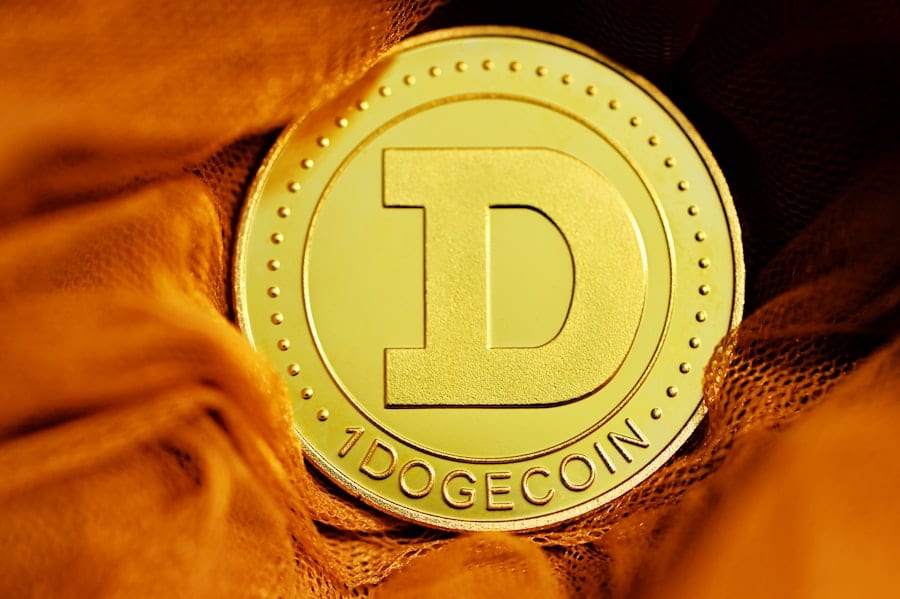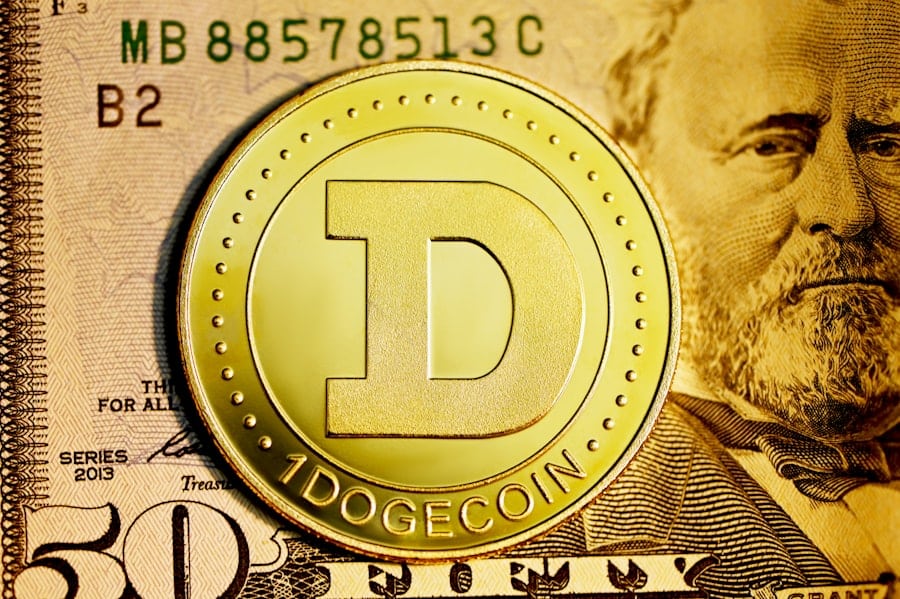Decentralized Finance, commonly referred to as DeFi, represents a paradigm shift in the financial landscape, leveraging blockchain technology to create an open and permissionless financial system. At its core, DeFi lending allows individuals to lend and borrow assets without the need for traditional intermediaries such as banks or financial institutions. This is achieved through smart contracts—self-executing contracts with the terms of the agreement directly written into code—on blockchain platforms like Ethereum.
The elimination of intermediaries not only reduces costs but also enhances accessibility, enabling anyone with an internet connection to participate in financial activities. The DeFi lending ecosystem is characterized by its transparency and security. All transactions are recorded on a public ledger, allowing users to verify the integrity of the system.
Additionally, users retain control over their assets, as they do not need to deposit funds into a centralized entity. Instead, they interact directly with decentralized applications (dApps) that facilitate lending and borrowing. This model empowers users by providing them with greater autonomy over their financial decisions while also fostering a more inclusive environment for those who may have been excluded from traditional banking systems.
Key Takeaways
- DeFi lending allows individuals to lend and borrow funds without the need for traditional financial intermediaries.
- When choosing a DeFi lending platform, consider factors such as security, user interface, interest rates, and supported assets.
- Creating a wallet and funding it with cryptocurrency is the first step to participating in DeFi lending.
- Different lending options and rates are available in DeFi lending, including variable and fixed interest rates.
- Understanding the risks and benefits of DeFi lending is crucial for making informed decisions.
- Making your first loan or borrowing transaction in DeFi lending involves selecting the desired amount and terms, and approving the transaction.
- Managing your DeFi lending portfolio involves monitoring interest rates, loan-to-value ratios, and overall market conditions.
- Staying informed and adapting to the changing DeFi landscape is essential for maximizing opportunities and minimizing risks in DeFi lending.
Choosing the Right DeFi Lending Platform
Selecting an appropriate DeFi lending platform is crucial for both lenders and borrowers, as each platform offers unique features, interest rates, and risk profiles. Popular platforms such as Aave, Compound, and MakerDAO have emerged as leaders in the space, each with its own set of functionalities. For instance, Aave allows users to switch between fixed and variable interest rates, providing flexibility based on market conditions.
On the other hand, Compound operates on a liquidity pool model where users can earn interest by supplying assets to the pool, which are then lent out to borrowers. When evaluating a DeFi lending platform, it is essential to consider factors such as security audits, user interface, community support, and the range of supported assets. Security is paramount in the DeFi space due to the prevalence of hacks and exploits; thus, platforms that have undergone rigorous security audits by reputable firms should be prioritized.
Additionally, user experience plays a significant role in ensuring that both novice and experienced users can navigate the platform effectively. Community engagement and support can also provide valuable insights into the platform’s reliability and performance.
Creating a Wallet and Funding it with Cryptocurrency

To participate in DeFi lending, users must first create a cryptocurrency wallet that supports the assets they intend to use. Wallets can be categorized into two main types: hot wallets and cold wallets. Hot wallets are connected to the internet and are more convenient for frequent transactions, while cold wallets are offline storage solutions that offer enhanced security for long-term asset holding.
Popular hot wallet options include MetaMask and Trust Wallet, which allow users to interact seamlessly with various DeFi platforms. Once a wallet is established, funding it with cryptocurrency is the next step. Users can acquire cryptocurrencies through exchanges such as Coinbase or Binance, where they can purchase assets using fiat currency or other cryptocurrencies.
After acquiring the desired assets, users can transfer them to their wallet address. It is crucial to double-check wallet addresses during this process to avoid irreversible loss of funds. Once the wallet is funded, users are ready to explore lending opportunities within the DeFi ecosystem.
Exploring Different Lending Options and Rates
DeFi lending platforms offer a variety of lending options that cater to different user needs and risk appetites. Users can choose between fixed-rate and variable-rate loans, depending on their preferences for stability or potential gains. Fixed-rate loans provide predictability in repayment amounts over time, while variable-rate loans may offer lower initial rates but can fluctuate based on market conditions.
Interest rates in DeFi lending are determined by supply and demand dynamics within the platform’s liquidity pools. When there is high demand for borrowing a particular asset, interest rates tend to rise; conversely, when supply exceeds demand, rates may decrease. Users should conduct thorough research on current rates across multiple platforms to ensure they are getting competitive terms.
Additionally, some platforms offer incentives such as governance tokens or yield farming opportunities that can enhance overall returns for lenders.
Understanding the Risks and Benefits of DeFi Lending
While DeFi lending presents numerous advantages, it is not without its risks. One of the primary concerns is smart contract vulnerability; if a smart contract contains bugs or exploits, it could lead to significant financial losses for users. Additionally, the volatility of cryptocurrency prices poses a risk for borrowers who may find themselves unable to repay loans if the value of their collateral decreases sharply.
On the flip side, DeFi lending offers several benefits that make it an attractive option for many users. The potential for high returns on investment through interest payments can significantly outperform traditional savings accounts or fixed-income investments.
This democratization of finance empowers users to take control of their financial futures.
Making Your First Loan or Borrowing Transaction

Initiating a Lending Transaction
Once users have selected a platform and funded their wallets, they can proceed with their first loan or borrowing transaction. For lenders, this typically involves supplying assets to a liquidity pool on the chosen platform. Users will specify the amount they wish to lend and review the associated interest rates before confirming the transaction.
The Borrowing Process
For borrowers, the process involves selecting an asset they wish to borrow and providing collateral—usually in the form of another cryptocurrency—to secure the loan. The collateralization ratio varies by platform; for example, some may require borrowers to provide collateral worth 150% of the loan amount to mitigate risk for lenders.
Receiving Funds and Utilizing Capital
After submitting the loan request and collateral, borrowers will receive their funds in a matter of minutes, allowing them to utilize capital for various purposes such as trading or investment opportunities. Upon completion, lenders will begin earning interest on their supplied assets based on the platform’s terms.
Managing Your DeFi Lending Portfolio
Effective management of a DeFi lending portfolio is essential for maximizing returns while minimizing risks. Users should regularly monitor their positions and be aware of market fluctuations that could impact their investments. Many platforms provide dashboards that display real-time data on interest rates, collateral values, and overall portfolio performance.
Diversification is a key strategy in managing risk within a DeFi lending portfolio.
Additionally, staying informed about changes in platform policies or market conditions can help users make timely adjustments to their portfolios.
Engaging with community forums or following industry news sources can provide valuable insights into emerging trends and potential opportunities within the DeFi space.
Staying Informed and Adapting to the Changing DeFi Landscape
The DeFi landscape is continually evolving, with new projects and innovations emerging regularly. Staying informed about these developments is crucial for users looking to optimize their lending strategies. Following reputable sources such as industry blogs, social media channels, and newsletters can help users keep abreast of important updates and trends.
Moreover, participating in community discussions on platforms like Discord or Telegram can provide insights from other users’ experiences and strategies. Engaging with these communities not only fosters knowledge sharing but also helps build connections within the DeFi ecosystem. As regulations evolve and new technologies emerge, being adaptable will be key for users aiming to navigate this dynamic environment successfully.
In conclusion, understanding decentralized finance lending involves grasping its foundational principles and navigating its complexities effectively. By choosing the right platform, managing portfolios wisely, and staying informed about market changes, users can harness the potential of DeFi lending while mitigating associated risks. The journey into DeFi lending offers exciting opportunities for both lenders and borrowers alike in this rapidly changing financial landscape.
If you are interested in exploring the features of the latest Samsung devices, you may want to check out

